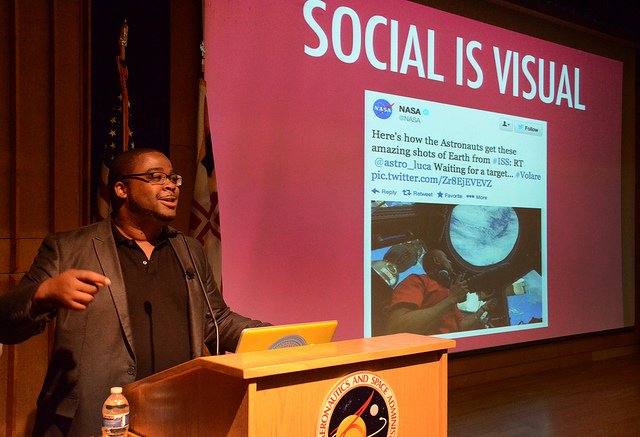A Visual Approach to Professional Communication
[We’re pleased to welcome Deborah C. Andrews of University of Delaware, author of the article “Making the Familiar Strange: Thinking Visually in a Study Abroad Course in Professional Communication,” published in Business and Professional Communication Quarterly.]
Today’s intensely international, multimedia marketplace for communication places a premium on design thinking and collaboration. Such thinking has been fostered for years in art and architecture programs, which feature a studio approach to solving problems and making art. As I’ve pursued my current research on how—or whether–21st century workspaces can be designed to foster innovation, I’ve collaborated with colleagues in architecture and design and become more aware of how they teach. Visits to professional design studies and other workspaces have also made me aware of how creating communication products is an experimental, interactive, iterative, dynamic, flexible process, much like play. Visual thinking is key, especially embracing the role of text in a visual environment of messages. My observations are confirmed by professional writer, who tell us that they depend increasingly on visual thinking and design skills to compose successful messages. University courses in professional communication, however, rarely cultivate a studio atmosphere or approach visual skills at any more than a superficial level. In this article, I describe a short course
in visual communication for American undergraduate art students, taught in London by a colleague and in which I participated for three years. It provides an attractive model for bridging the gap between pedagogy and practice in professional communication, opening students’ eyes while at the same time inviting them to enjoy the game.
The abstract:
Business and professional communicators increasingly rely on visual thinking and design strategies to create effective messages. The workplace need for such thinking, however, is not readily accommodated in current pedagogy. A long-running study abroad short course for American students taught in London provides a model for meeting this need. Addressed to students in art and design and framed through principles of discovery learning, the course approach and assignments can be productively adapted to enhance the visual competence of students of professional communication.
You can read “Making the Familiar Strange: Thinking Visually in a Study Abroad Course in Professional Communication” from Business and Professional Communication Quarterly free for the next two weeks by clicking here. Want to know all about the latest research from Business and Professional Communication Quarterly? Click here to sign up for e-alerts!
*Presentation image credited to NASA Goddard Space Flight Center (CC)
 Deborah C. Andrews is a professor emerita of English at the University of Delaware. She has published textbooks and articles about professional communication, especially internationally. Her current research is on how—or whether—the physical environment of a workspace can be designed to foster entrepreneurial or scientific innovation through effective communication.
Deborah C. Andrews is a professor emerita of English at the University of Delaware. She has published textbooks and articles about professional communication, especially internationally. Her current research is on how—or whether—the physical environment of a workspace can be designed to foster entrepreneurial or scientific innovation through effective communication.












![Share Your Most Surprising Policy Citation for Chance to Win $500 [Closed] Share Your Most Surprising Policy Citation for Chance to Win $500 [Closed]](https://www.socialsciencespace.com/wp-content/themes/conferpress/images/default_thumbnail-new-border.jpg)























































































